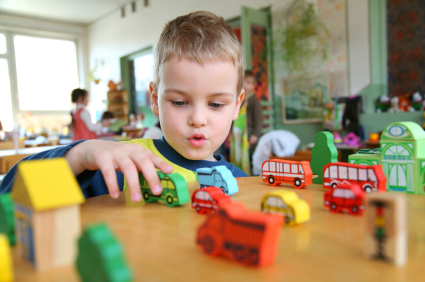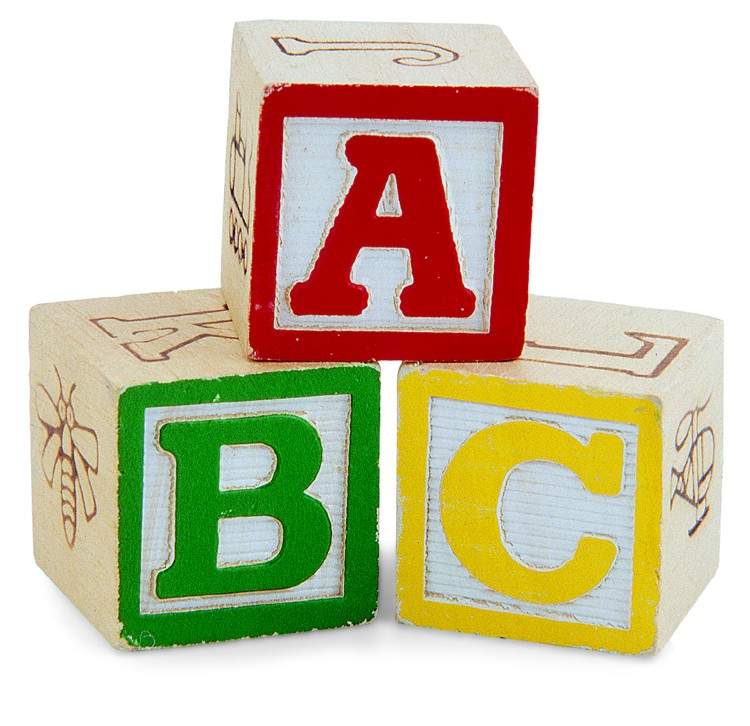Universally designed toys
 Universally designed toys grow with a child, and are accessible to all children. Designating toys by play stages, rather than ages, is an extension of universal design principles. Mistrett in Anderson, 2005.
Universally designed toys grow with a child, and are accessible to all children. Designating toys by play stages, rather than ages, is an extension of universal design principles. Mistrett in Anderson, 2005.
Play Stage 1- Sensory exploration
Toys for children in the sensory exploration stage help children figure out, “What is it?” Children in this stage tend to explore any toy the same way regardless of the toy’s characteristics e.g., pounding, mouthing, banging or rolling.
Example: dolls, blocks and cups are viewed as objects to hold and bang rather than play with for their unique characteristics (e.g., feed a baby or build a tall building of blocks).
Play Stage 2- Discovery of cause and effect
Toys for children in the cause and effect stage answer “What does it do?” A child interacts with a toy to see what can happen, and is intrigued by the result to do it over and over.
Example: Play hide and seek in a tire maze; squeeze your juice box hard; roll a ball to a dog.
Play Stage 3- Imagination and creativity
Toys in the imagination and creativity stage promote “What can it be or do?” Children use objects in pretend play or use several toys or objects together to create something else.
Example: A tissue becomes a doll’s cape; blocks can be arranged as a runway for a doll fashion show; a pot turns into a drum for a rock star.
Universally designed toys promote play across all three play stages and encourage children to use toys and objects for different purposes. For example:
Blocks |
Crayons |
Balls
|
|
| Sensory exploration | bang two together, drop, put in mouth | roll, bang, put in and out of a cup | bounce, roll, throw |
| Cause and effect | stacked a tall tower to knock down | make colorful marks on paper | roll to knock over toys |
| Imagination and creativity | arrange to form an intricate race track | create family portraits | wrap in white cloth to make a ghost for Halloween |


